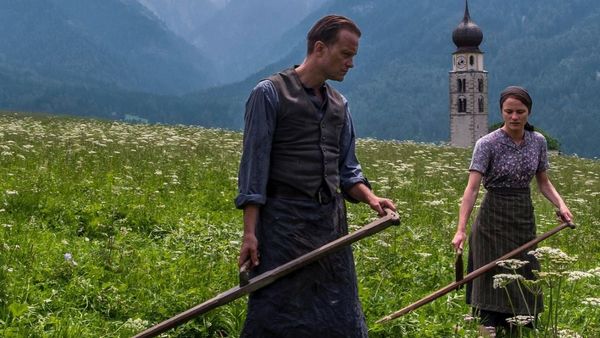The word of the LORD came to Solomon:
As to this house you are building—if you walk in my statutes, carry out my ordinances, and observe all my commands, walking in them, I will fulfill toward you my word which I spoke to David your father.
I will dwell in the midst of the Israelites and will not forsake my people Israel.
When Solomon finished building the house,
its inside walls were lined with cedar paneling: he covered the interior with wood from floor to ceiling, and he covered its floor with fir planking.
At the rear of the house a space of twenty cubits was set off by cedar panels from the floor to the ceiling, enclosing the inner sanctuary, the holy of holies.
The house was forty cubits long, that is, the nave, the part in front.
The cedar in the interior of the house was carved in the form of gourds and open flowers; all was of cedar, and no stone was to be seen.
In the innermost part of the house* he set up the inner sanctuary to house the ark of the LORD’s covenant.
In front of the inner sanctuary (it was twenty cubits long, twenty wide, and twenty high, and he covered it with pure gold), he made an altar of cedar.
Solomon covered the interior of the house with pure gold, and he drew golden chains across in front of the inner sanctuary, and covered it with gold.
He covered the whole house with gold, until the whole house was done, and the whole altar that belonged to the inner sanctuary he covered with gold (1 Kings 6:11-22).
This Ash Wednesday, the McGrath Institute for Church Life will launch a free online course entitled “Journey with The Saint John’s Bible.” Each of six units will be released throughout the weeks of Lent, providing participants with a journey through Scripture, art, and practices of prayer both ancient and new.
The first unit consists of six videos—each clocking in at around 15 minutes or less—providing a foundational introduction to the manuscript tradition, The Saint John's Bible itself, and the prayer practices of lectio divina and visio divina. The remaining five units will each include four videos. One video will explore an illumination from The Saint John's Bible, another will unpack the Scripture passage it depicts, and the remaining two will provide guided experiences of lectio divina and visio divina.
The course will be led by professors from Notre Dame’s theology department and Medieval Institute, as well as faculty and staff from the McGrath Institute itself. There are no assigned readings. There is no homework. There are no online discussions, though several communities have indicated their intention to stream the videos in a group setting to encourage conversation and fellowship, so questions for discussion and reflection will be provided in the course platform.
At a basic level, the course is meant to provide a rich fare of food for thought, nourishing the imaginations of those who participate. At a more profound level, it is intended to offer a way for people to deepen their relationship with God. The goal of the course is not simply to introduce people to The Saint John's Bible as a work of scriptural art, or to its beautiful illuminations; the goal is to show them how art can enrich one’s understanding of Scripture, how Scripture can come to life in a beautiful way through visual art, and, perhaps most importantly, how praying with both art and especially Scripture can lead to an encounter with the Word of God, the Word who “was in the beginning with God” (John 1:2), the Word through whom “all things came to be” (John 1:3), the Word who “became flesh and lived among us” (John 1:14).


